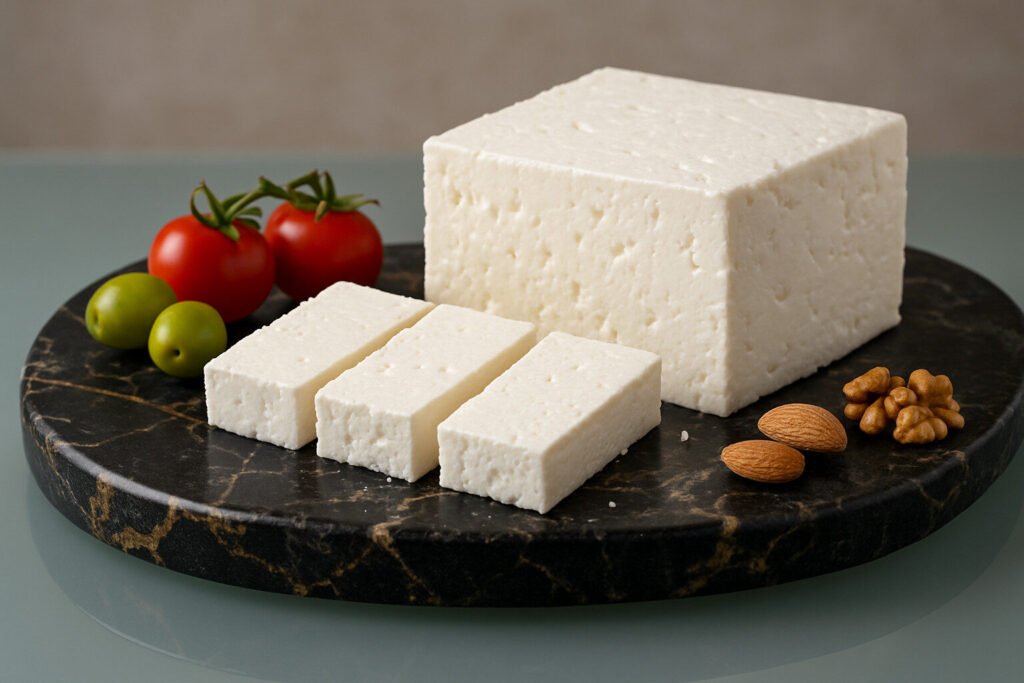Saltwater Brine Cheese
Definition and Scope
Saltwater brine cheese refers to cheeses matured and preserved in a concentrated salt solution. This technique creates a distinctive rind and internal environment that inhibits spoilage microorganisms. The brine method is traditionally applied to semi-hard and hard cheeses across Mediterranean and Balkan regions.
This category is defined by its processing method rather than milk type or coagulation style. Brining significantly impacts the cheese’s final moisture content, texture, and shelf life. It represents a crucial branch of cheese-making technology focused on preservation and flavor development.
Production Process
Production begins with forming cheese curds that are pressed into their final shapes before brining. The young cheeses are then submerged in salt-saturated water for periods ranging from days to several months. Temperature and brine concentration are carefully controlled throughout this maturation phase.
The brine penetrates the cheese through osmosis, drawing out moisture while introducing salt evenly. This process creates a protective rind and establishes the cheese’s characteristic firm texture. Regular monitoring ensures proper salt absorption and prevents surface defects during the aging period.
Sensory Profile
Saltwater brine cheeses typically exhibit pronounced salty flavors balanced by milky and sometimes tangy notes. Their textures range from semi-firm to hard, becoming more granular with extended aging. The rind develops a distinctive slippery or moist surface from the brine treatment.
These cheeses often display minimal mold growth due to the high-salinity environment. Aroma profiles tend toward clean and salty with occasional nutty or fermented undertones. The salt concentration directly influences the perception of other flavor compounds throughout the cheese.
Culinary Applications
Brined cheeses serve well as table cheeses when paired with fruits, nuts, and robust wines. Their saltiness makes them excellent for grating over pasta, salads, and baked dishes. Many varieties maintain their structure well when heated, making them suitable for cooking applications.
In traditional cuisines, these cheeses are often cubed for meze platters or shredded into savory pastries. The salt content allows them to complement bitter greens and acidic components in salads. Their preservation qualities make them practical for travel and storage in warm climates.
Regional Examples
Feta from Greece represents the most recognized brine cheese, made from sheep’s or goat’s milk. Halloumi from Cyprus is notable for its high melting point, allowing it to be grilled or fried. Bulgarian sirene shares similar characteristics but varies in milk composition and aging time.
Turkish beyaz peynir and Romanian brânză telemea demonstrate regional variations within this category. Each tradition reflects local preferences for salt intensity, texture, and milk sources. These examples showcase how brine technique adapts to different cultural and environmental contexts.

